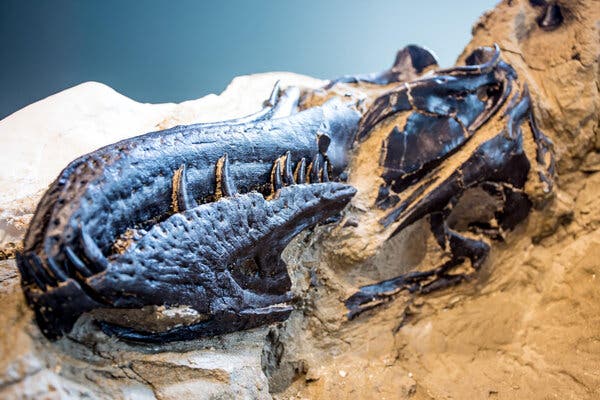Study Resolves Longstanding Debate on Tiny Tyrannosaurus Fossils

A recent study has provided clarity in a decades-long debate among paleontologists regarding the classification of small dinosaur fossils discovered in the Western United States. Researchers announced that a fossil specimen housed at the North Carolina Museum of Natural History belongs to a distinct species known as Nanotyrannus lancensis, rather than being a juvenile form of the well-known Tyrannosaurus rex.
The findings, published in the journal Nature, suggest that Nanotyrannus represents a unique group of tyrannosaurs. According to lead author Lindsay Zanno, this discovery highlights an animal that has remained largely overlooked and opens up new avenues of inquiry within paleontology. Zanno stated, “We have this animal that’s been hiding in plain sight, and it raises all kinds of questions that we as paleontologists weren’t asking until now.”
The origins of this debate date back to the 1980s, when fossil hunters unearthed a small tyrannosaur skull from a rock formation that had previously yielded T. rex remains. Initially, researchers identified the skull as a new species. However, in 1999, a group of paleontologists contended that these fossils actually belonged to juvenile T. rex specimens. This hypothesis suggested that the iconic dinosaur underwent a significant growth spurt as it matured into adulthood.
This perspective gained traction, particularly after the discovery of a relatively complete fossil known as “Jane” in 2001, which further fueled the argument for the juvenile T. rex theory. Despite the evidence presented, the notion of Nanotyrannus as a separate species remained contentious among scientists.
The recent work by Zanno and her colleagues utilized advanced analytical techniques and a reevaluation of existing fossils. The study provides compelling evidence that supports the classification of Nanotyrannus lancensis as a distinct species, rather than a juvenile form of T. rex. This conclusion is expected to shift the scientific understanding of the evolutionary history of tyrannosaurs.
Thomas Holtz, a noted tyrannosaur specialist at the University of Maryland, expressed support for the new findings, acknowledging the complexity of the debate over the years. Holtz, who was not involved in the current study, remarked on the significance of the research in resolving a longstanding question within the paleontological community.
As researchers continue to analyze the implications of this discovery, the study of Nanotyrannus could yield insights into the diversity and adaptability of tyrannosaurs during the Late Cretaceous period. The ongoing exploration of such fossils not only enriches the understanding of these ancient creatures but also underscores the dynamic nature of paleontological research.
With this new evidence, the conversation around small tyrannosaur fossils is poised to evolve, inviting further exploration and debate in the scientific community. As the research continues, it remains clear that understanding these fascinating creatures requires a willingness to challenge long-held assumptions and embrace new perspectives.






